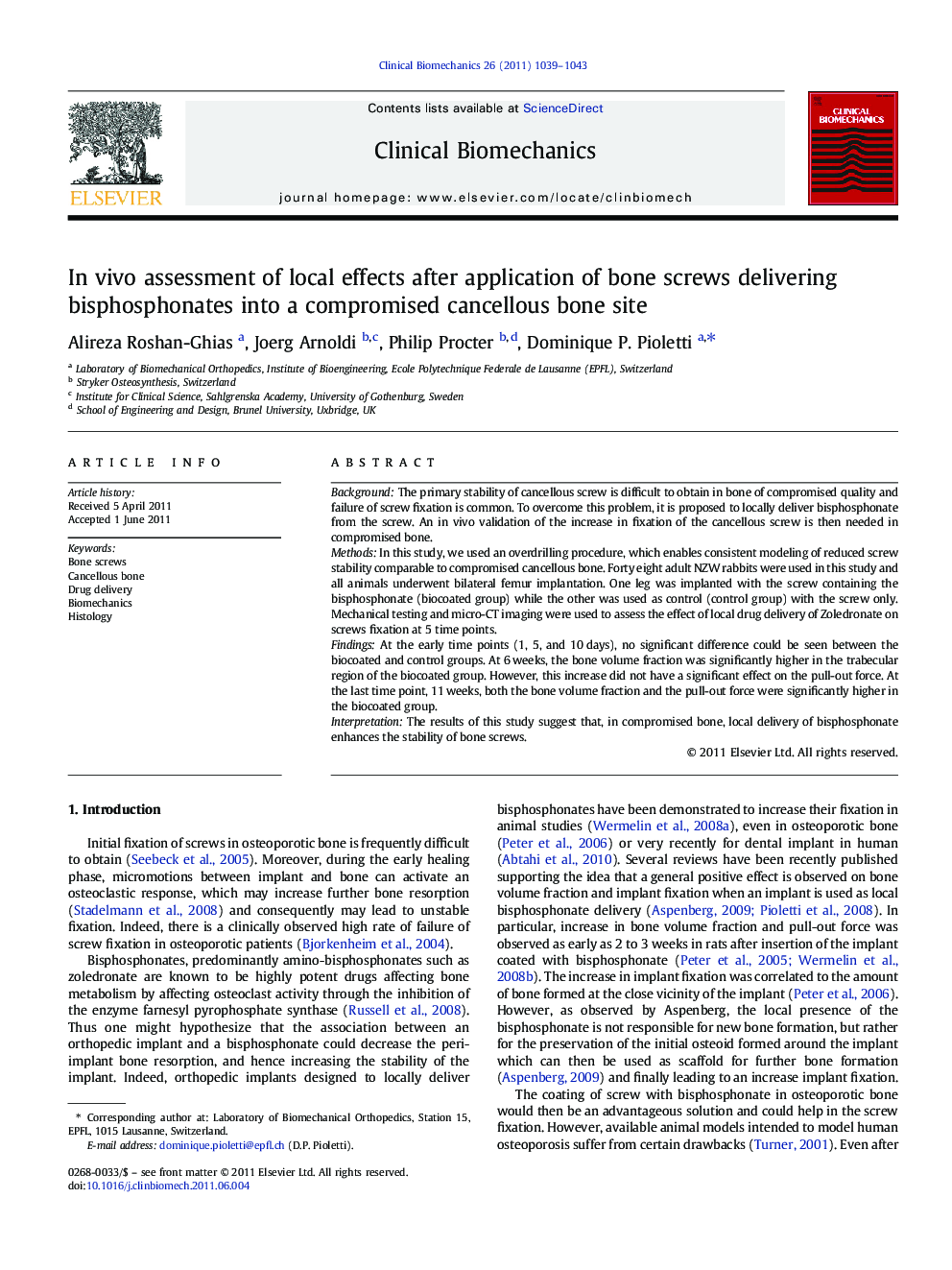| Article ID | Journal | Published Year | Pages | File Type |
|---|---|---|---|---|
| 4050541 | Clinical Biomechanics | 2011 | 5 Pages |
BackgroundThe primary stability of cancellous screw is difficult to obtain in bone of compromised quality and failure of screw fixation is common. To overcome this problem, it is proposed to locally deliver bisphosphonate from the screw. An in vivo validation of the increase in fixation of the cancellous screw is then needed in compromised bone.MethodsIn this study, we used an overdrilling procedure, which enables consistent modeling of reduced screw stability comparable to compromised cancellous bone. Forty eight adult NZW rabbits were used in this study and all animals underwent bilateral femur implantation. One leg was implanted with the screw containing the bisphosphonate (biocoated group) while the other was used as control (control group) with the screw only. Mechanical testing and micro-CT imaging were used to assess the effect of local drug delivery of Zoledronate on screws fixation at 5 time points.FindingsAt the early time points (1, 5, and 10 days), no significant difference could be seen between the biocoated and control groups. At 6 weeks, the bone volume fraction was significantly higher in the trabecular region of the biocoated group. However, this increase did not have a significant effect on the pull-out force. At the last time point, 11 weeks, both the bone volume fraction and the pull-out force were significantly higher in the biocoated group.InterpretationThe results of this study suggest that, in compromised bone, local delivery of bisphosphonate enhances the stability of bone screws.
